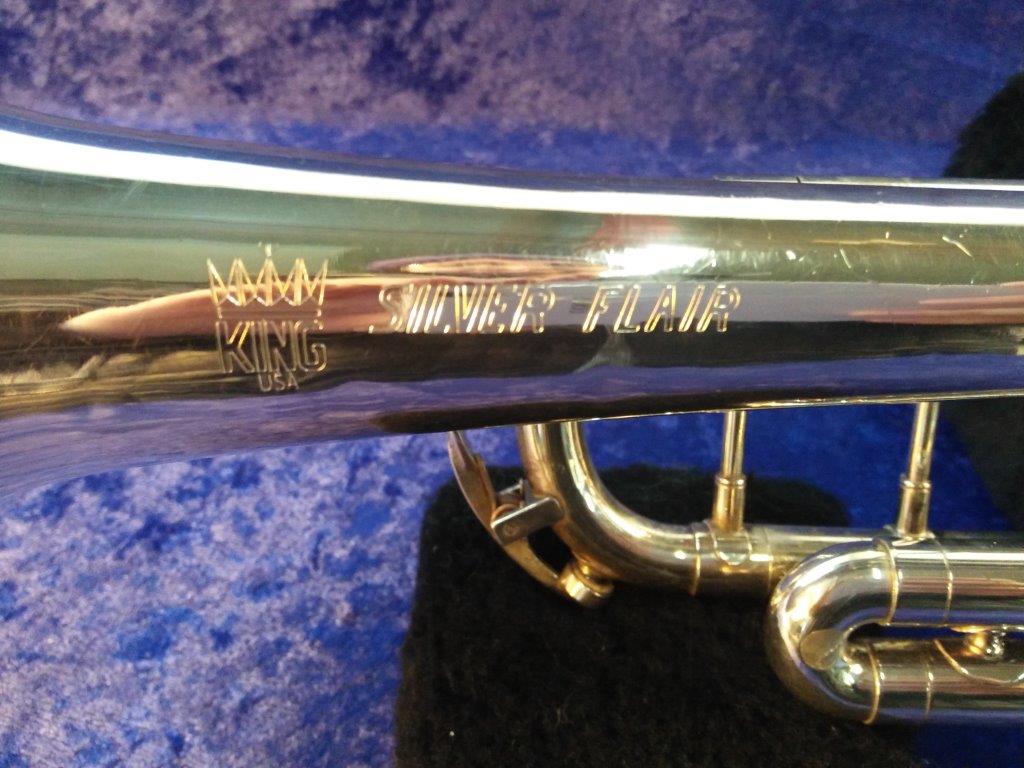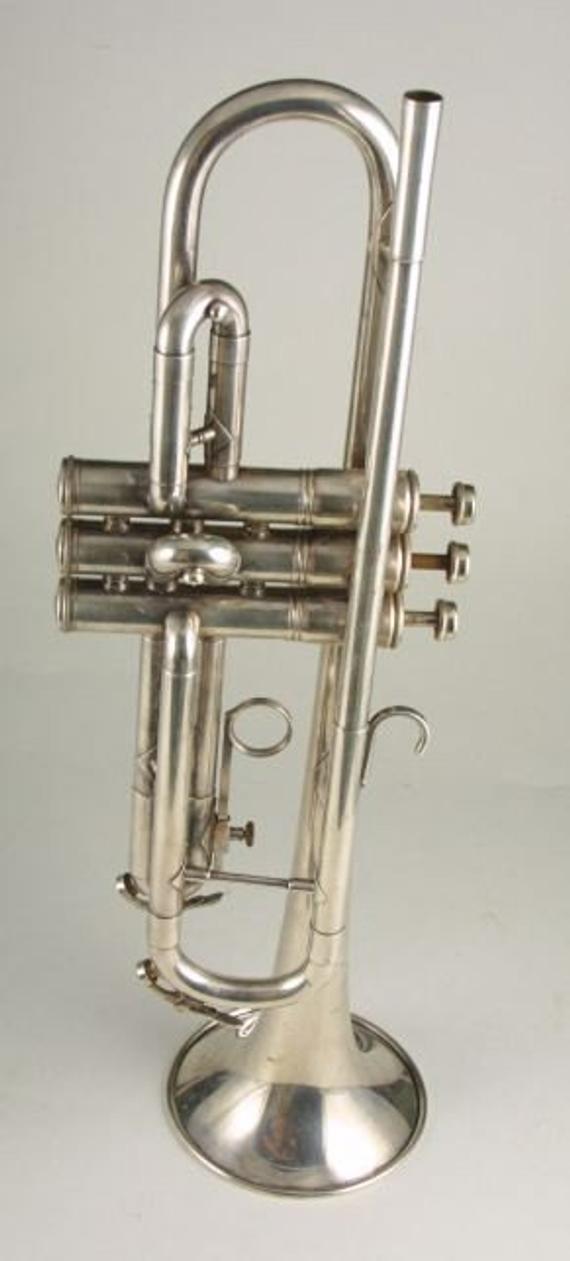- King Trumpet Serial Number Search
- King 601 Trumpet Serial Number Lookup
- King Musical Instrument Serial Numbers
The development of a serial number list has been very difficult because of the lack of official records. Mr. H. N. White kept very detailed records but when the company was sold to the Seeburg Corporation all official records were destroyed. When looking up the age of your instrument, complete the following steps: (1.) Find your instruments catalog page and year that the catalog was made. Pay special attention to the small details on your instrument because most artists drawings account for unique changes and features. (2.) Compare your findings to the serial number list. Please keep in mind that most catalogs were dated on the back and should be trusted more than the serial number list.
- Early instruments will have a 'lion head' by the serial numbers and are engraved 'The King'.
- In 1918 the company was incorporated and 'Co' was added to the engraving of all instruments, before 1918 the engraving read simply as 'H. N. White.'
- In 1926-1928 H. N. White introduced Sterling Silver bells to his instruments.
- In 1948-1950 'Silver Tone' engraving was changed to read 'Silversonic'.
- After 1966, all instruments were manufactured in Eastlake and engraved with 'King Musical Instruments.'
1/01/2008 We have reevaluated the serial number list to reflect new information. The number of instruments produced in the early years 1893-1905, has been reduced.
| Date | Serial Number |
| 1893-1899 | 1-4,000 |
| 1900-1903 | 4,001-6,000 |
| 1904-1905 | 6,001-9,000 |
| 1905-1910 | 9,001-25,000 |
| 1910-1915 | 25,001-40,000 |
| 1915-1925 | 40,001-78,000 |
| 1925-1930 | 78,001-126,000 |
| 1930-1935 | 126,001-176,000 |
| 1935-1936 | 176,001-186,000 |
| 1936-1937 | 186,001-200,000 |
| 1937-1938 | 200,001-212,000 |
| 1938-1939 | 212,001-225,000 |
| 1939-1940 | 225,001-239,000 |
| 1940-1941 | 239,001-254,000 |
| 1941-1942 | 254,001-264,000 |
| 1942-1945 | 264,001-267,500 |
| 1945-1946 | 267,501-277,000 |
| 1946-1947 | 277,001-287,000 |
| 1947-1948 | 287,001-296,500 |
| 1948-1949 | 296,501-301,500 |
| 1949-1950 | 301,501-308,000 |
| 1950-1951 | 308,001-316,500 |
| 1951-1952 | 316,501-322,000 |
| 1952-1953 | 322,001-330,000 |
| 1953-1954 | 330,001-337,000 |
| 1954-1955 | 337,001-340,000 |
| 1955-1960 | 340,001-370,000 |
| 1960-1965 | 370,000-406,500 |
| 1965-1970 | 406,501-457,600 |
String Serial Numbers
American Standard String Bass Serial Numbers | |
| 1934 001 1935 200 1936 400 1937 800 1938 1200 1939 1600 1940 2200 1942-1946 No Production WWII 1947 Limited Production 1949 1950 1951 1952 2450 1953 2600 1954 2800 1955 3000 1956 3200 1957 3400 1958 3600 1959 3800 1960 4000 1961 4200 1962 4400 1963 4600 1964 4800 1965 5000 | 1936 001 1937 185 1938 480 1939 790 1940 1010 1941 1320 1942-1946 No Production WWII 1947-1948 No Production 1949 1400 1950 1500 1951 1600 1952 1700 1953 1800 1954 1900 1955 2000 1956 2100 1957 2200 1958 2300 1959 2400 1960 2500 1961 2600 1962 2700 1963 2800 1964 2900 1965 3090 |

Cleveland and American Standard Serial Numbers:
| Date | Serial Number |
| 1919-1930 | 1-10,000 |
| 1930-1935 | 10,000-30,000 |
| 1935-1940 | 30,000-40,000 |
| 1940-1945 | 40,000-45,000 |
| 1945-1950 | 45,000-50,000 |
| 1950-1955 | 50,000-65,000 |
| 1955-1960 | 65,000-100,000 |
| 1960-1965 | 100,000-160,000 |
| 1965-1970 | 160,000-420,000 |

Mr. White's goals for his company were to constantly strive to build better instruments with the highest quality, and build each instrument acoustically correct. Starting in 1909 Mr. White made the 'Department of Acoustical Research' and purchased (what is thought of as) the worlds largest set of tuning bells. Every instrument in production would spend time being developed, and looking for the smallest of improvements. Mr. White never started production on any instrument unless the new design was a vast improvement in both tone and quality.
It was in 1917 that a separate small building was erected beside the main plant for development of a line of woodwind instruments. By the 1920's King woodwinds, along with King brasses and horns, took their places in the finest orchestras.
In 1936 F.A. Reynolds left King to start his own short-lived company. Early Reynolds instruments closely resemble King instruments with few if any improvements over the original design. In the late forties Mr. Reynolds sold his company and eventually Reynolds was owned by Norlin.
When Mrs. Edna White took over the company World War Two was just a few months away. It is important to point out at that Edna White was the first women executive (in the band industry) entering a male dominated world, and many in the industry viewed her as an outsider and predicted the immediate decline of The H. N. White Company. What many of Mrs. White's critics failed to realize was that she had experience in the business world and knew how and when to use her authority. Edna's basic belief was that The H. N. White Company should have superior quality second to none, and she let this belief motivate most of her business decisions. With the start of the war, the company was unable to make many instruments although the service department remained open, and Mrs. White worked hard to get government contracts. The work force was highly skilled and particularly adapt at putting together saxophones with many parts that had to be tuned just right. With that in mind, the government issued the company two large contracts. The first contract was to assemble radar units (tuners and antennae's) for both the Navy and Army. Because of the company's complex work with silver, the second contract was issued to assemble silver plated parts on proximity fuses. Each radar unit had a large number of parts and were difficult to assemble, and King craftsman worked long hours to increase production.
Throughout this time Mrs. White (in the center office talking to someone 1945), President of The H. N. White Company, had to reassure the network of King dealers that a woman as President still meant that the company was going to stay focused on good products with great quality when the war was finished. For the most part the dealers were happy with the change and continued their partnership with the King company. As the war drew to a close, work slowly began on a new line of instruments to be introduced when the war over. By the end of the war, The H. N. White Company had completed a $250,000 expansion (two new wings) which increased production by fifty percent. The total war time contracts awarded to the company totaled five million dollars.
Mrs. White's daughter Cathryn (Kay) White Ludwig (now married to William F. Ludwig Jr) became the companies Vice President and advertising director in 1945. Cathryn was responsible for putting together the White
